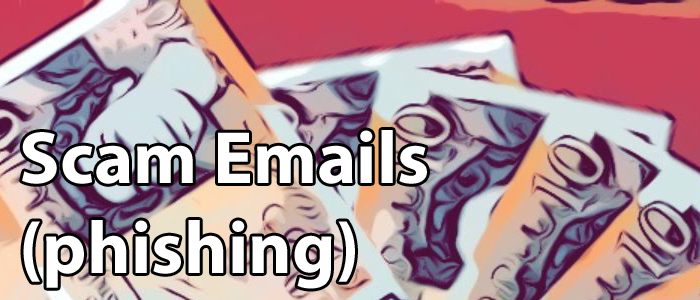It is not often that a day goes by without a scam email appearing in one of my inboxes. Threats of account closures, refunds from HMRC, PayPal payments going astray even threats to life. All of these emails have common telltale signs that will help you identify scam emails.

Scam emails, how to recognise and deal with them
Scam emails, also known as Phishing are a very common way for criminals to try and defraud you. They will hope to trick you into providing personal information enabling the criminals to access your accounts. They may threaten you, demanding payment directly or trick you into downloading malicious software before ‘charging’ for a removal service. To help protect you from scam emails have a look at the following tips.
Delete it
This might sound obvious but many people see a strange email and are intrigued enough to open it. This is what the scammer wants. Once you’ve read the email you will naturally begin to question whether it is a scam and then be more inclined to follow links or instructions. If you are in any doubt, delete it.
Opening a scam email is highly unlikely to infect your device but you are more likely to question whether the email is genuine.
Check the sender
Scammers use email spoofing to disguise where an email has been sent from. Email spoofing is where the email is altered to look as though it was written by someone else. If you hover over the sender or right-click on the sender name you should be able to see the email address behind it. The email address will look wrong and unrelated to who the email is claiming to be from. At this point there should be no further doubt in your mind, delete the email.
Don’t click links
If you are still unsure and wish to proceed. Never click the links in the email. If you hover over a link it will show the address you will be taken to on clicking. This will be the website that the scammer wants you to visit so they can gain more information or infect your device. If you are tempted to check, open your browser and go to the official website before logging in and checking to make sure all is in order.
Report them at Action Fraud
Before deleting the scam emails you can report them via the Action Fraud website. The link is https://www.actionfraud.police.uk/ and use the online reporting tool. There is a short form to complete and then you can forward the scam email to them.


